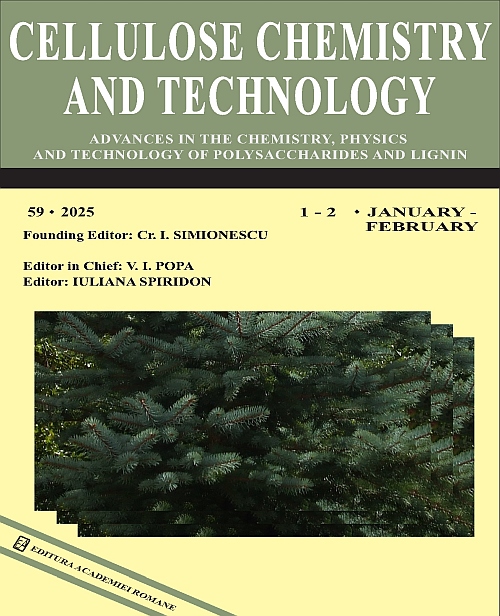|
Title
Biowaste-derived lignin and its use for adsorbing Fe(II) ions from aqueous environments
Authors
ELENA UNGUREANU, BOGDAN-MARIAN TOFĂNICĂ, OVIDIU C. UNGUREANU, MARIA E. FORTUNĂ, RĂZVAN ROTARU, CARMEN O. BREZULEANU, GABRIELA FRUNZĂ and VALENTIN I. POPA
Received
January 10, 2025
Published
Volume 59 Issue 3-4 March-April
Keywords
Fe(II) ions, Sarkanda grass lignin, seed germination, biowaste, adsorption
Abstract
Given the abundance of lignin in nature, its relatively accessible processing, and the minimal costs associated with it, this
biomaterial has the potential to be exploited to a much greater extent. This research aim to explore the potential of lignin
as an adsorbent for retaining of certain polluting species, with a particular focus on Fe(II) in aqueous environments. To
achieve optimal adsorption, initial experimental tests were performed to determine the following parameters: the initial
pH of the aqueous iron and lignin solution, the concentrations of Fe(II) in the aqueous solutions, the mass of the adsorbent,
and the contact time between the involved phases in the adsorption process. To assess the efficiency of Sarkanda grass
lignin adsorption, a series of analyses were carried out, with a particular emphasis on: the surface morphology, the state
of chemical equilibrium elucidated through the interpretation of the adsorption isotherms using the Freundlich and
Langmuir models, the kinetics of the process elucidated through the application of the Lagergren I and Ho-McKay II
models, and biological stability assessed through the evaluation of the behavior of selected test biological species,
represented by seeds germination of Triticum aestivum L, Glosa variety, incorporated in the adsorbent contaminated with
Fe(II) and in the filtrates resulting from phase separation. The behavior of these biological species was then evaluated in
the filtrates resulting from the phase separation. The experimental results indicate that Sarkanda grass lignin is a viable
solution for the adsorption of Fe(II) from wastewater under the tested experimental conditions. This is evident from the
results obtained from the mass ratio and contact time studies, specifically the lignin-Fe(II) system. Additionally, the
simplicity of the work technique, the ecological character of the biomass fraction, and the economic benefit resulting
from valorizing this waste further support the suitability of Sarkanda grass lignin as an effective adsorbent for the removal
of Fe(II) from wastewater.
Link
https://doi.org/10.35812/CelluloseChemTechnol.2025.59.40
|



